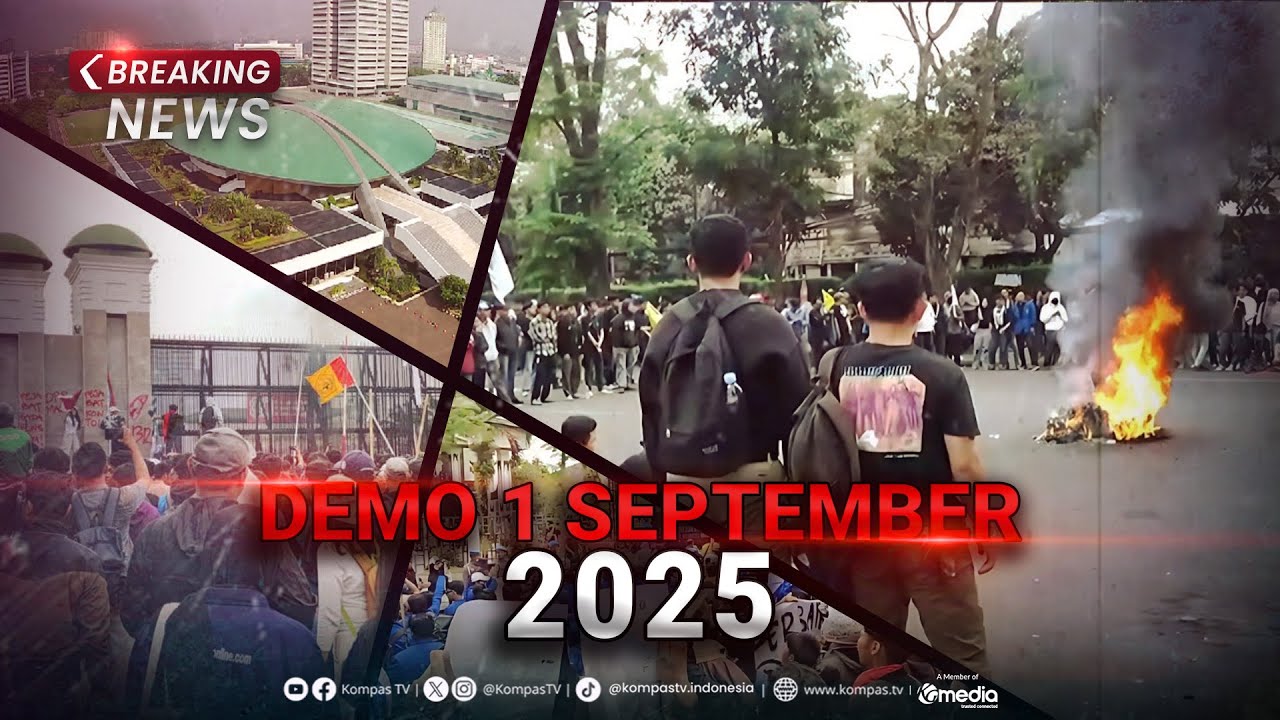
NGOCSTIP – Indonesia witnessed a wave of demonstrations on September 1, 2025, across multiple cities including Yogyakarta, Solo, Samarinda, and Lamongan. The protests came after weeks of unrest following incidents of violence and destruction of public facilities. While some organizations decided to withdraw to prevent further escalation, others continued to voice their demands on the streets. The atmosphere was tense but more controlled compared to the previous week. Student alliances and civic groups tried to keep their movements peaceful and focused on core issues, avoiding provocations that could trigger clashes. The situation became a reflection of public frustration and highlighted the delicate balance between civic expression and national stability. Calls for reform, transparency, and justice grew louder as society pushed back against perceived mishandling of earlier demonstrations.
In several parts of Indonesia, protests on September 1 took on a calmer tone, guided by students and civil organizations. One example was the rally in Yogyakarta at the UGM Roundabout and the Regional Parliament office of DIY. Participants delivered speeches, honored the memory of Rheza Sendy Pratama, a student who died in earlier unrest, and demanded accountability. Similar actions occurred in Solo under the banner Solo Raya Menggugat, where demonstrators gathered at the city parliament office to protest police repression. Leaders met directly with parliament representatives, ensuring their voices were heard. The approach was more disciplined than earlier demonstrations, which had been marred by destruction and chaos. Student groups emphasized their protests were rooted in conscience and not tools for political manipulation. This wave of activism highlighted how Indonesian students continue to play a central role in shaping national discourse.
Not all groups in Indonesia chose to participate in demonstrations on September 1. The All Indonesia Student Executive Body (BEM SI) Kerakyatan decided to withhold action due to worsening conditions in the past week. Reports of vandalism and damage to offices had raised concerns about infiltration and misuse of the movement. The organization reminded citizens not to be provoked by unverified calls for protests circulating online. Coordinators emphasized that protecting public property and maintaining peace should remain priorities. They stated that saving Indonesia requires collective unity and responsible action. By stepping back, these groups signaled a need to reassess strategies and safeguard the integrity of civic movements. Their decision reflected broader concerns about how quickly protests can be hijacked for destructive purposes, risking the credibility of genuine demands for justice, transparency, and reform.
“Read more: Szoboszlai Stuns Arsenal as Liverpool Snatch Dramatic Victory”
Despite withdrawals, demonstrations continued across Indonesia with varied outcomes. In Lamongan, groups visited both the parliament building and police headquarters, where leaders received their concerns respectfully. In Lampung, the governor personally met demonstrators, ensuring the protest ended peacefully. However, Samarinda painted a different picture. Tensions flared, and the use of tear gas was reported, affecting even bystanders not involved in the protest. The contrast between peaceful gatherings and violent clashes revealed how local dynamics shape protest outcomes. While some regions successfully maintained calm through dialogue, others faced unrest that reignited fears of instability. Observers noted that without consistent approaches to crowd management and communication, demonstrations in Indonesia risk escalating unpredictably. This regional variation underscored the importance of tailored strategies to balance security, civic rights, and public trust during mass mobilizations.
Alongside street protests, social media in Indonesia amplified demands under the banner 17 plus 8 People’s Demands. Citizens, influencers, and activists spread calls for reform, transparency, and empathy toward victims of state violence. Among the demands were the withdrawal of military forces from civilian security, protection of demonstrators from criminalization, and the establishment of an independent investigation team for recent casualties. These online movements gained momentum, pushing leaders including the president, parliament, and security institutions to respond. Although protests on September 1 were calmer in some cities, the online space kept pressure alive and mobilized broader support. Digital platforms allowed frustrations to transcend physical boundaries, making it harder for authorities to ignore collective voices. The resonance of these online demands showed how Indonesia’s democratic discourse now thrives both in physical spaces and virtual arenas, shaping national debates in real time.